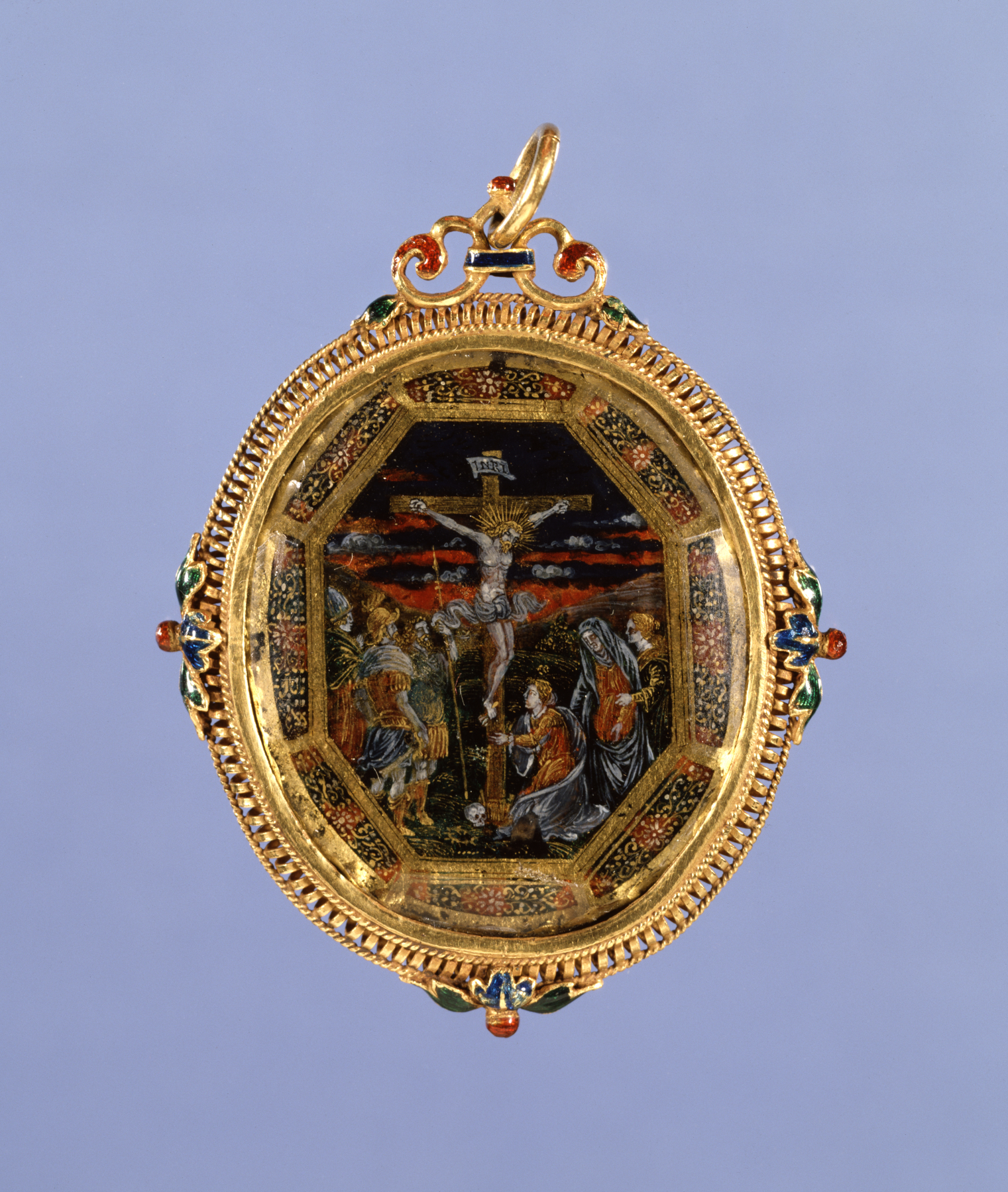Pendant with the Crucifixation
(Renaissance Europe )
Provenance
Provenance (from the French provenir, 'to come from/forth') is the chronology of the ownership, custody, or location of a historical object. Learn more about provenance at the Walters.
Prinz Heinrich von Bourbon, Graf von Bardi (Comte di Bardi), by purchase; Sale, E. Hirschler, Vienna, April 2, 1906, no. ???; Raoul Heilbronner, Paris, by purchase; Henry Walters, Baltimore, 1909, by purchase, Walters Art Museum, 1931, by bequest.
Exhibitions
| 1988-1989 | The Sforza Court: Milan in the Renaissance 1450-1535. Archer M. Huntington Art Gallery, University of Texas at Austin, Austin. |
| 1979-1980 | Jewelry - Ancient to Modern. The Walters Art Gallery, Baltimore. |
Conservation
| Date | Description | Narrative |
|---|---|---|
| 9/28/1987 | Loan Consideration | examined for loan |
| 1/27/1988 | Treatment | cleaned; examined for condition |
| 5/9/1991 | Examination | examined for condition |
Geographies
Italy, Milan (Place of Origin)
Measurements
H: 2 3/8 × W: 1 7/8 × D: 3/16 in. (6.1 × 4.8 × 0.5 cm)
Credit Line
Acquired by Henry Walters, 1909
Location in Museum
Accession Number
In libraries, galleries, museums, and archives, an accession number is a unique identifier assigned to each object in the collection.
In libraries, galleries, museums, and archives, an accession number is a unique identifier assigned to each object in the collection.
46.24


